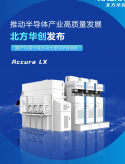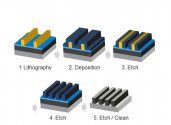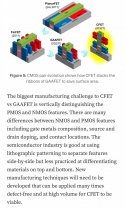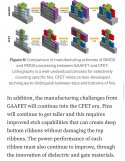Etching and deposition techniques and their quality are the primary innovation pressure points for new architectures. Lithography resolution primarily pushes feature size innovation (a bit of a simplification since detail sharpness does matter but in this case a useful one to understand what research enablers and constraints are).
thanks a lot.. you have cleared many critical points
NAURA is front runner in Etching technology.. remember
@tokenanalyst posted this news.
---------------------------------------------------------------------------------------------------------
Beast of a Etching machine developed by NAURA..

As a key technical equipment in the semiconductor manufacturing industry chain, the development level of etching machines directly affects the miniaturization, performance improvement and yield control of integrated circuits. It is the core driving force for the high-quality development of the semiconductor industry. With the expansion of domestic logic chip production capacity, the industry's demand for 12-inch key process dielectric etching machines has increased. At the same time, the continuous advancement of domestic memory chip technology and the continued expansion of production capacity will also drive a considerable number of CMOS key process dielectric etching machines.
In order to promote the high-quality development of the semiconductor industry, Northern Huachuang has established a professional R&D team to develop Accura LX, a 12-inch dielectric etching machine for key processes. Its process performance has exceeded the current industry indicators: through Continue plasma (continuous plasma) settings and Optimization of the transmission process can achieve higher productivity while ensuring product yield; through the high-density opening rate design of the Shower head (gas inlet silicon electrode), excellent product uniformity can be achieved and equipment Fatal arcing can be reduced. ) risk; in addition, the machine is equipped with various forms of radio frequency pulse functions to achieve a high selection ratio of Mask and Stop layer, and reduce device damage; the multi-zone air source flow control and The temperature adjustment design can achieve precise adjustment in micro areas to meet customer customized needs. The excellent performance of Accura LX equipment has been favored by many customers, and a number of process verifications have been completed.
Accura LX equipment, as a 12-inch dual Damascus CCP (capacitively coupled plasma) dielectric etching product launched by Northern Huachuang, has opened up a new product market field for Northern Huachuang and can be compared with the existing 12-inch silicon and metal etching products. The machine forms a complete etching process solution. At the same time, the 12-inch CCP etching machine hardware architecture and technology platform built by Accura LX can be used in storage, CIS (complementary metal oxide semiconductor image sensor), Power (power semiconductor) and other fields, and has broad application prospects.
In the future, Northern Huachuang will rely on its profound technology accumulation and R&D capabilities to continue to delve into the equipment market in the field of dielectric etching, continue to innovate and optimize the performance of dielectric etching equipment, promote the accuracy, yield and production capacity of integrated circuit manufacturing, and then meet the new requirements. The urgent demand for high-performance chips in a generation of information technology products drives industrial progress and creates unlimited possibilities.
----------------------------------------------------------------------------------------------
Chinese equipment companies progressing very fast in Non-Litho tools.. so once SMIC get EUV prototype and along with these Etching machine. so CFET fabrication process is very much plausible in 2026-27 ? right





